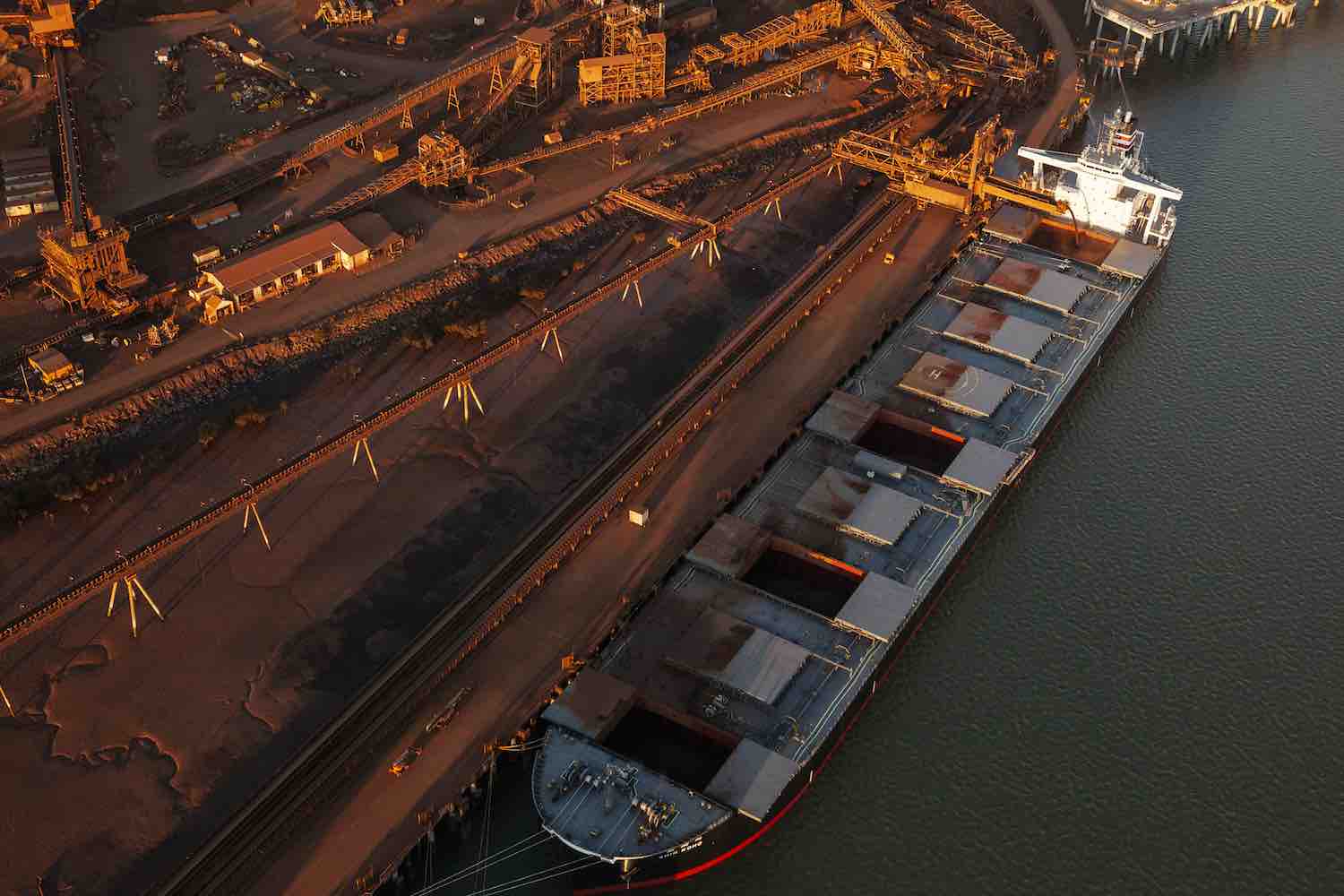
The mining industry transports moisture which has no value yet it incurs a significant carbon footprint with shipping. The surface moisture of iron ore, coal and base metals concentrates are significant and add significant mass to transported material that comes at a carbon cost. Scope 3 emissions have become a wakeup call to most major mining companies which is evident in their annual environmental impact reports. It is norm to see how they account for shipping and its impact on downstream scope 3 emissions. In the last 12 months, statistics from Australia show that:
In this article we weigh in on the balance between ‘slush and dust’ highlighting the challenges associated with transport moisture in downstream scope 3 transportation and distribution emissions.
Transport moisture is the residual process (transport) water which is the convenient production artifact of many mining and mineral processing flowsheets. It is passed down the value chain for downstream customers to deal with. Ore or mineral concentrate producers often leave it for the customer downstream once moisture is below the transportable limit or liquefaction threshold. The producers contribution to the value chain is not supposed to end there but often is the case and mind you, this residual water has to come out of the value chain somewhere. This often leads to the questions of where? And how? A good example in an Australian context is of the Pilbara ports which manage the shipping of as-received or “wet” tonnes of concentrated mineral and ore to the world. The nominal transport moisture content is about 10%.
50,832,500 tonnes of water were shipped with the wet minerals and ores from the Pilbara area. Ironically, this area happens to be one of the world’s most prospective solar or renewables endowed ore drying regions. An addition of a renewable-based drying step to each flowsheet to leverage the Pilbara region’s natural renewable energy advantage can eliminate these scope 3 emissions completely writes Grant Wellwood, Principal at Wellwood Associates. This will increase the potential to remove 11.7 Gt CO2e before it impacts the environment every year which is possible by configuring technology elements that are presently available and already proven at scale.
Mineral concentrates are generally born of a wet processes, the last unit operations in the flowsheet a filter to separate the process water from the concentrated minerals. While filters do a good job, they can’t remove all the capillary and surface water and therefore produce an inherently wet cake and the current practice is based largely on convenience to ship concentrates to customers in this wet form. Reducing the transport moisture closer to the dust extinction moisture for the material could make a huge difference. Getting rid of the moisture also presents the debacle of the extreme cases of too dry increases dust issues. The supply chain link between concentrator and refiner is based on bulk free-flowing material. These are the determinant factors:
The TML is an empirical value above which the concentrate is susceptible to liquefications. Bulk handled concentrate in its free form has the potential to generate dust and hence the transport moisture of the concentrate usually has a lower limit known as the DEM. This is an empirical value below which the concentrate has the potential to generate dust. A typical mineral concentrate transport moisture content is of the order of 8 -12% and the variation is due to drainage and evaporation over time.
Scope 3 emissions are associated with your customer’s business, which makes it a challenge to reduce them but to reach net-zero carbon they need to be addressed. In response to scope 3 emissions, some mineral processors are working with their downstream customers to redesign their flow-sheets. This is a long-term play with significant barriers in rebuilding or modifying the plant=capital, business disruption and risk. Another approach is improving the grade of the concentrate leaving the pit so there are fewer deleterious elements entering the customer’s section of the value chain. This is a more immediate approach, with limitations in potential if the energy required to improve grade is simply shifted back to the mineral producer as there is no net gain. Some engineered solutions for tackling scope 3 emissions include:
For many businesses, scope 3 emissions account for more than 70% of their carbon footprint. The processes of extraction, manufacturing and processing of the raw materials contributes to the burden on the downstream value chain. Reducing the impacts of transport moisture on downstream scope 3 emissions takes value and supply chain sustainability with constant analysis and measurement of organisation or product carbon footprint. Integrating renewable steps such as solar energy to get rid of filter cake moisture concentration in the value chain offers carbon offsets which can reduce the impacts of transport moisture. Mineral processors need to find the “Goldilocks” moisture specification between dust and slush. The journey continues, in the next article expect more on the topic of global climate change policies and achieving net-zero emissions.
GRT has a range of products designed to manage the surface of stockpiles, processing, conveying, and stacking, and transport offsite that can prevent the generation of wind from exposed surfaces, while greatly reducing the need to overly wet material in the effort to achieve dust control.
Your feedback is important to us. If you enjoyed reading this Global Road Technology industry update and found it informative, please let us know by leaving a REVIEW.
Concentrate on Scope 3. Retrieved 24/10/21.
Transport moisture – The elephant in the room. Retrieved 24/10/21.
What are Scope 3 emissions? Retrieved 24/10/21.
Zero in on scope 1,2,3 emissions. Retrieved 24/10/21.
Are environmental regulations, health and safety concerns or potential profit loss a concern right now?
Contact Us Now